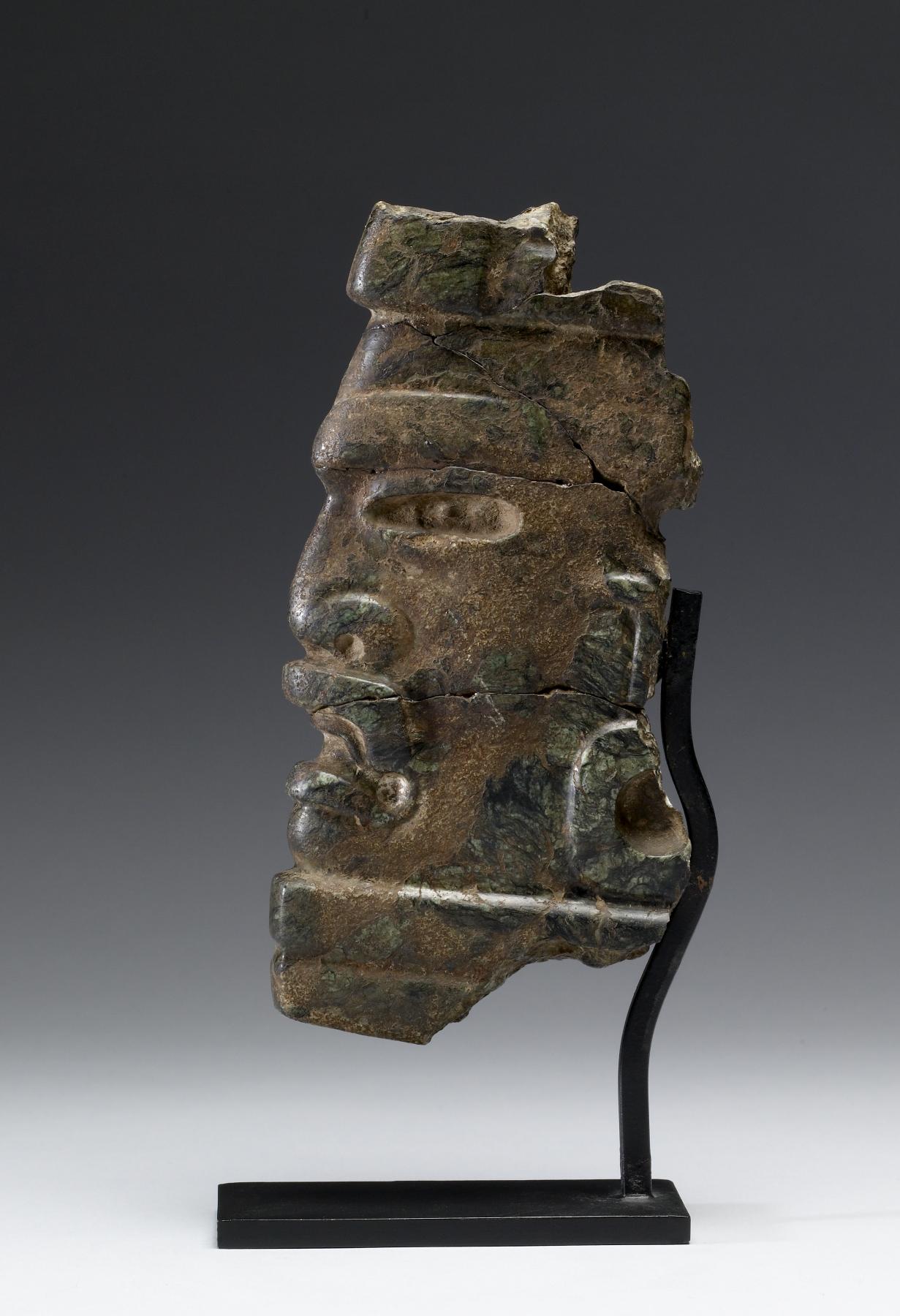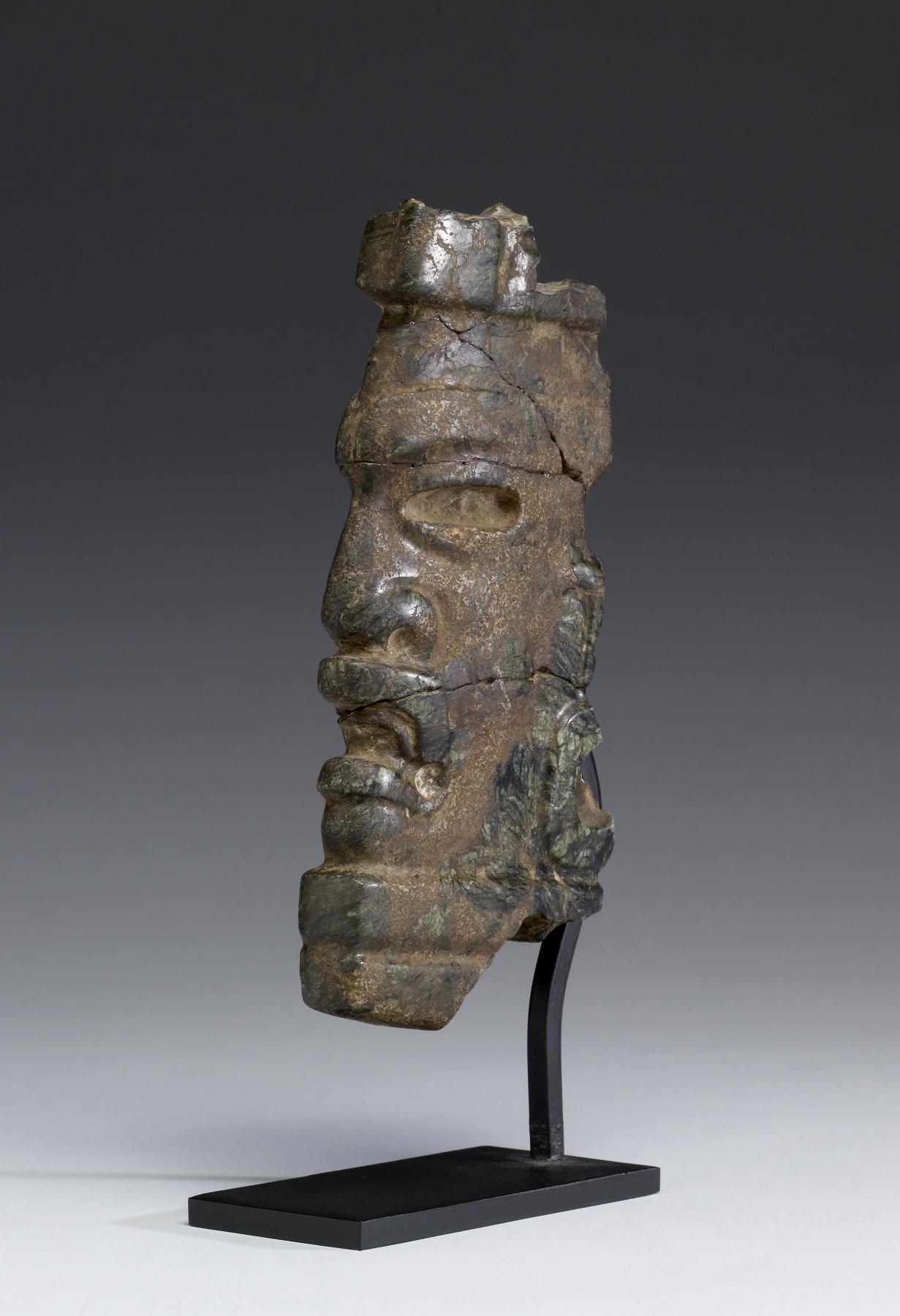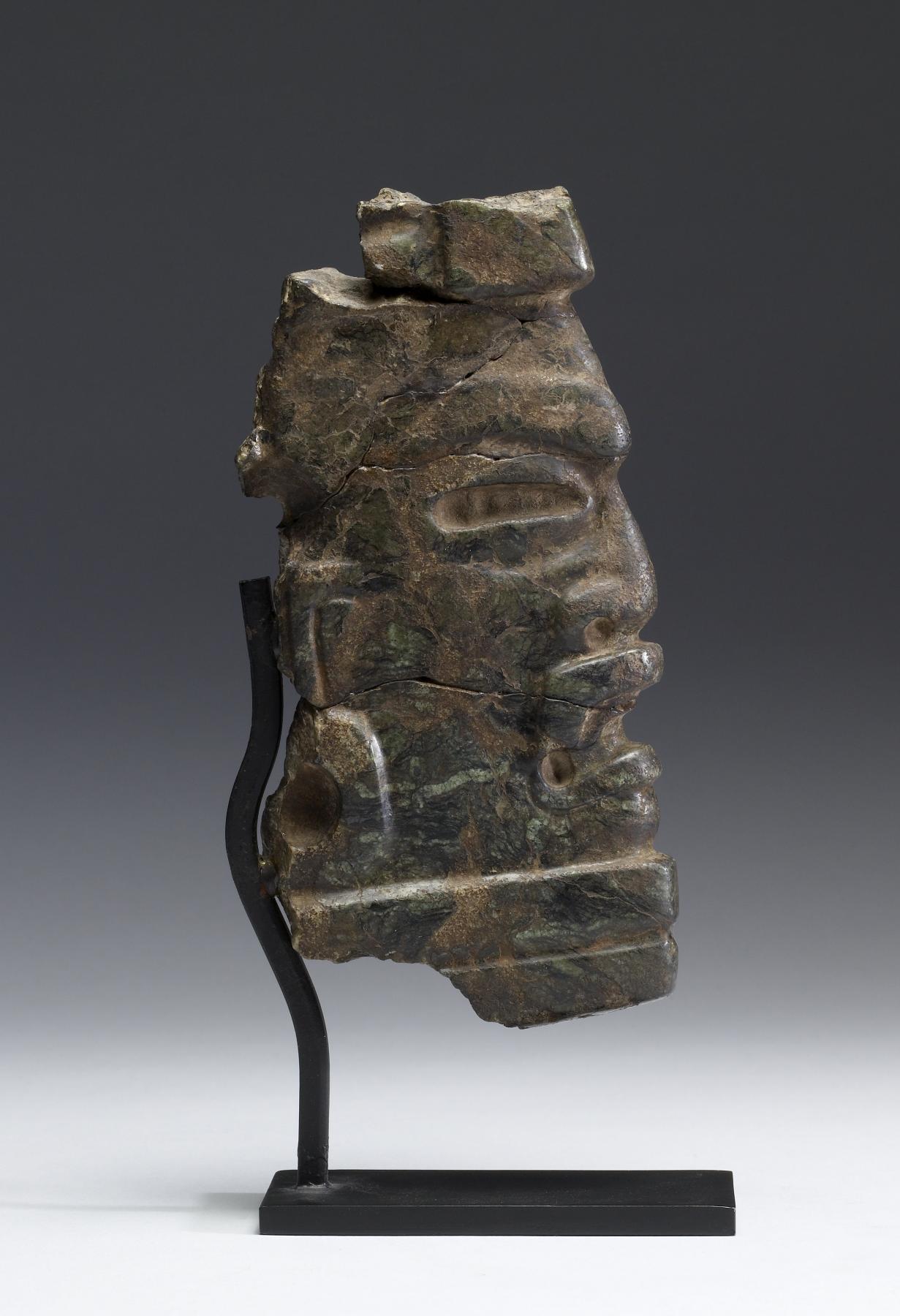Profile Face (Fragment)
(Ancient Americas )
This greenstone object shows a human face in profile. The narrowed eyes, downturned mouth, and drill marks at the corners of the mouth and the nostrils all show that this object is in the Olmec style. The Olmec thrived between 1200 and 300 BCE mainly along what is now called the Gulf Coast of Mexico. Scholars do not know what the Olmec called themselves so they use the same name the Mexica (Aztec) did. This word comes from the Nahuatl word for the Gulf Coast region, Olman, meaning "place of rubber."
The Olmec valued objects like this one because of their green color. In fact, greenstones were prized by peoples in this area for thousands of years. Just as you might imagine plants when you think of the color green, people in the past likely did too. Greenstones were closely tied to plants that people ate, such as maize. This link made all types of greenstone and greenstone objects valuable.
The artist used greenstone here to show that this object was important. The person shown on this carving was important too. Coded signs tell us this. For example, elite people often wore this type of large earring and headgear. The headgear shown here may be a ball player's helmet. It is difficult to be certain because this object is broken.
These breaks also make it difficult to know how this object was used. It may be a hacha. Hachas are a type of gear used for the Mesoamerican ballgame. The word comes from the Spanish word for “ax” because of the shape of these objects. Stone hachas probably represent wooden or cloth ones that players wore during the ballgame. In the Mesoamerican ballgame, rival teams try to score points using a rubber ball. Unlike in basketball or soccer, players of this ballgame usually can not use their hands or feet. Instead, they usually hit the ball with their hips or torsos as they play. Hachas and other gear protect the players during the game. Many versions of this game still exist today, but the Olmec were some of the first to play this game.
Prepared by Kendra Brewer, Hall Undergraduate Curatorial Fellow, Summer 2023
Provenance
Provenance (from the French provenir, 'to come from/forth') is the chronology of the ownership, custody, or location of a historical object. Learn more about provenance at the Walters.
Collection of Nasli and Alice Heeramaneck; Sold at Sotheby's, New York, Sale 5034, May 12 and 13, 1983, Lot 214; Throckmorton Fine Art, New York [date and mode of acquisition unknown]; John G. Bourne, September 18, 1995, by purchase; by bequest to Walters Art Museum, 2017.
Geographies
Guatemala
(Place of Origin)
Mexico (Place of Origin)
Measurements
H: 7 1/8 x W: 3 11/16 x D: 1 1/8 in. (18.1 x 9.3 x 2.8 cm)
Credit Line
Bequest of John G. Bourne, 2017
Location in Museum
Not on view
Accession Number
In libraries, galleries, museums, and archives, an accession number is a unique identifier assigned to each object in the collection.
In libraries, galleries, museums, and archives, an accession number is a unique identifier assigned to each object in the collection.
2009.20.233






